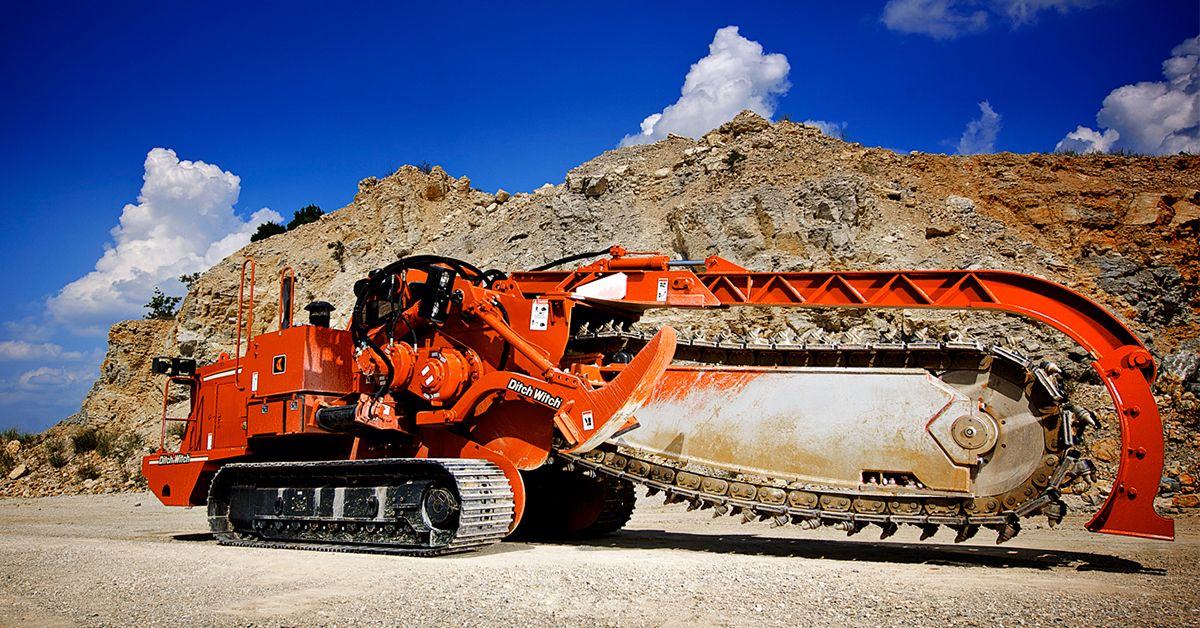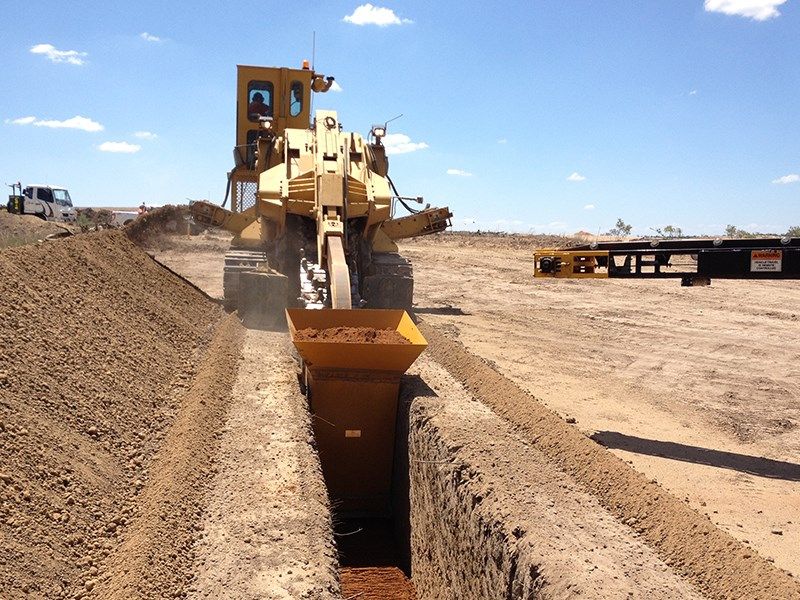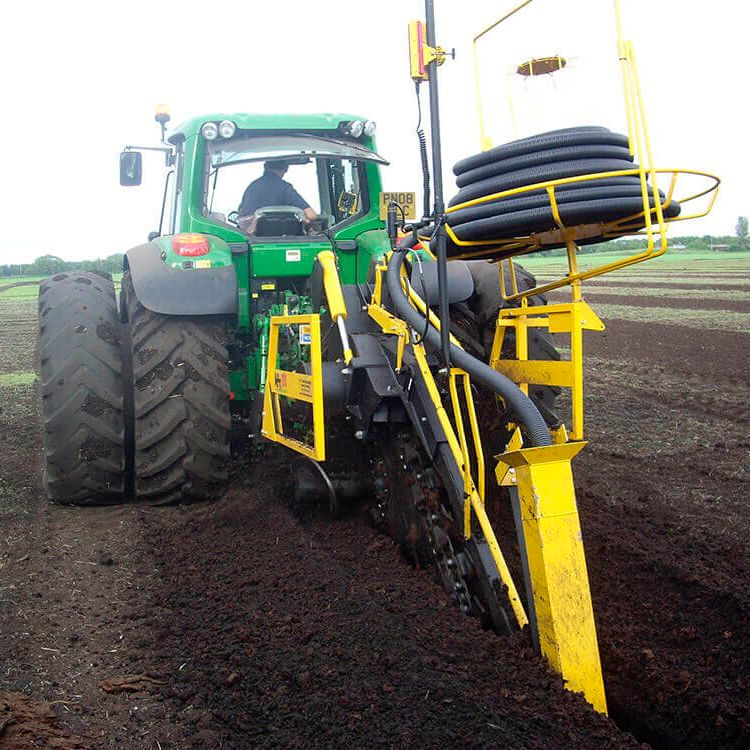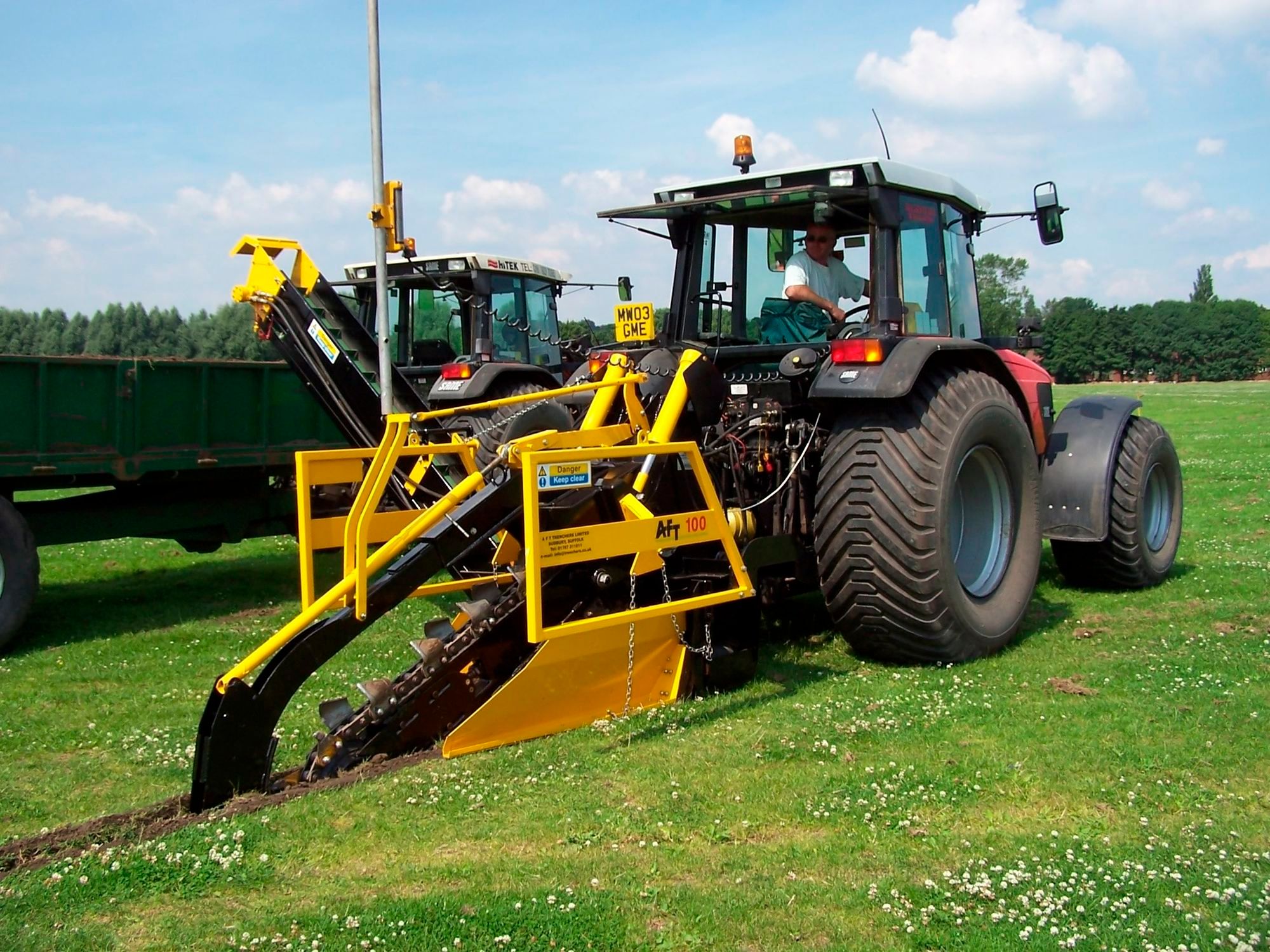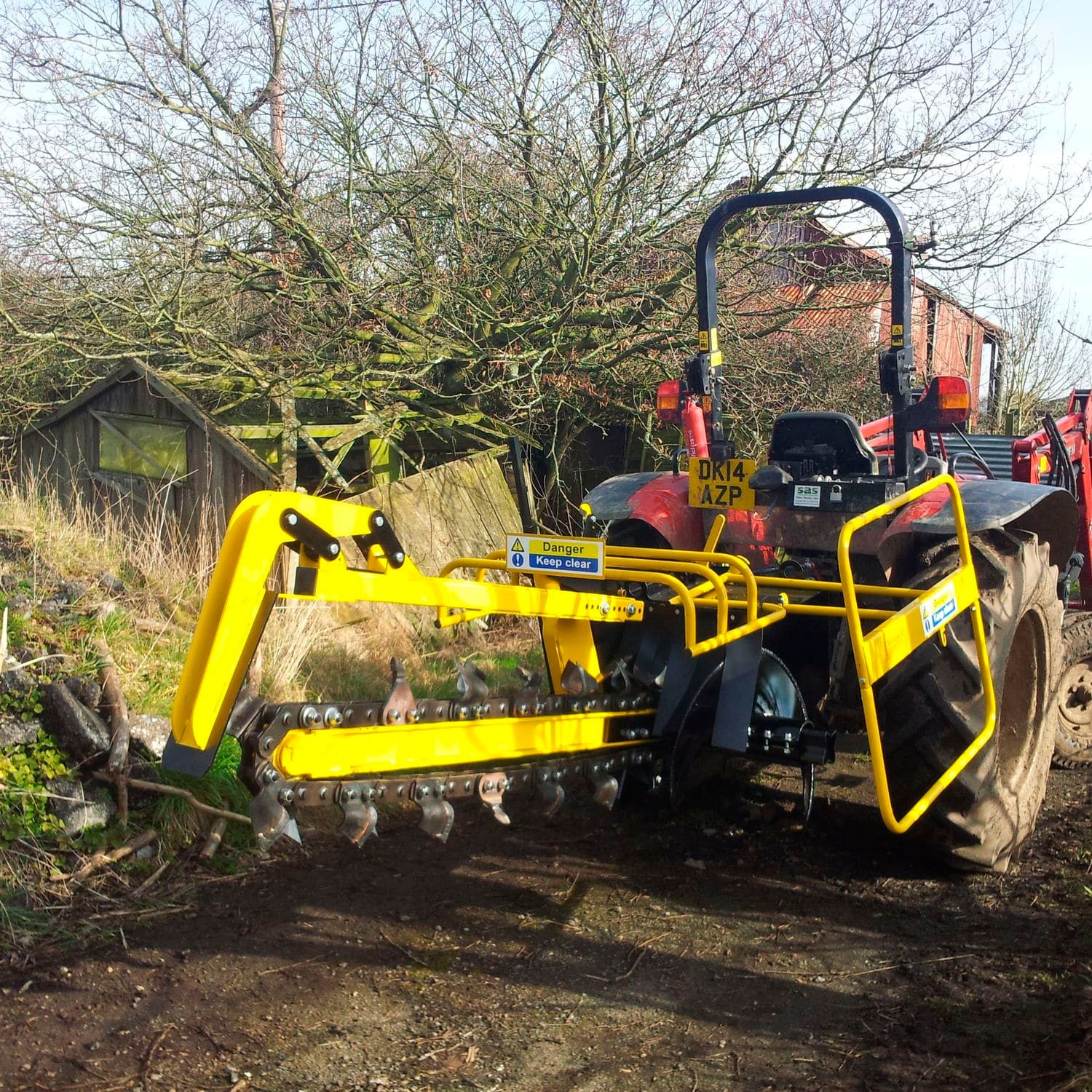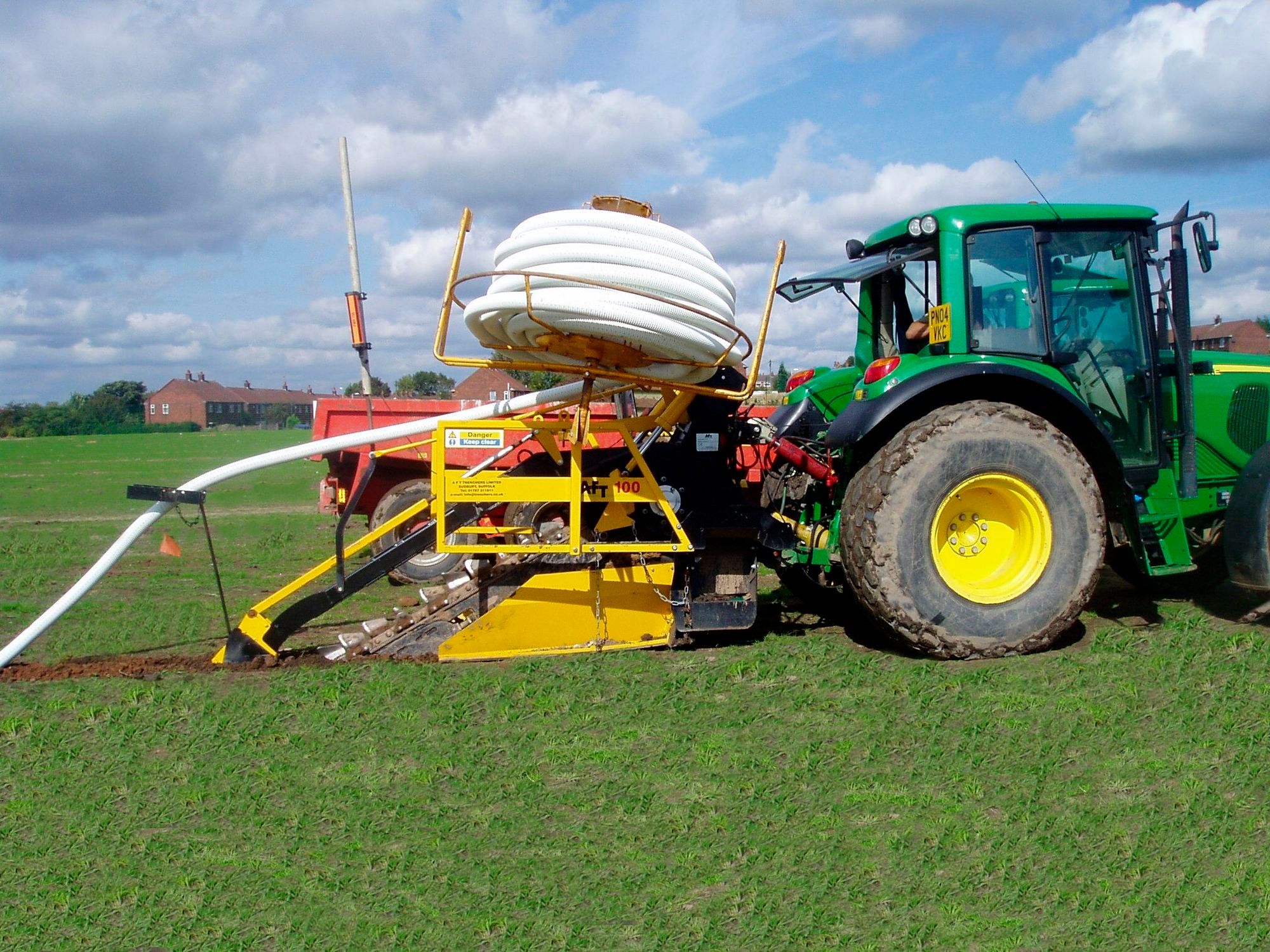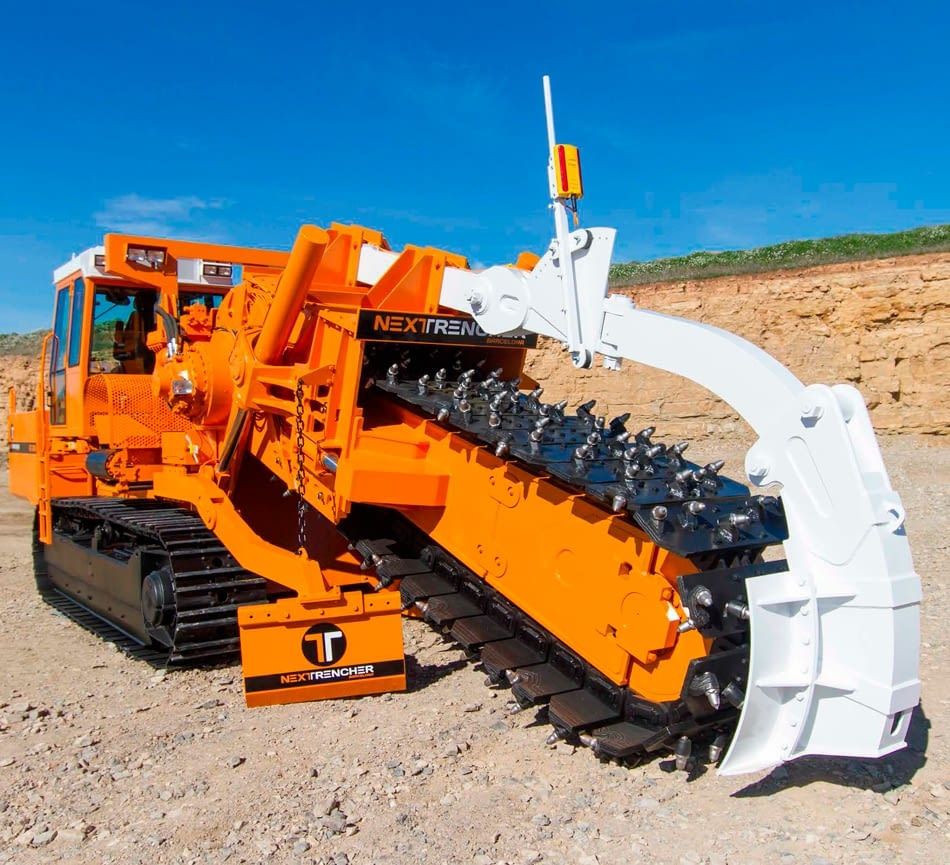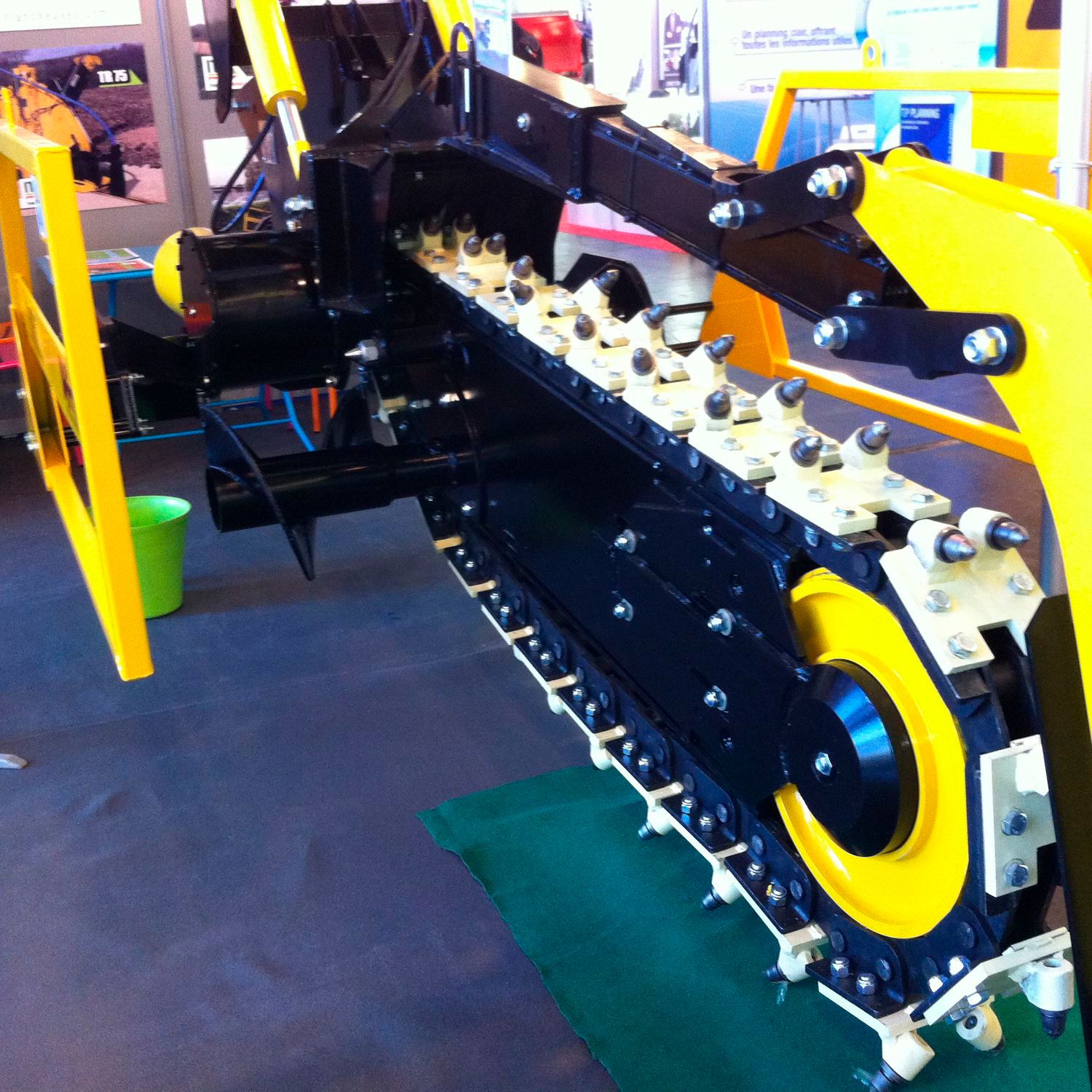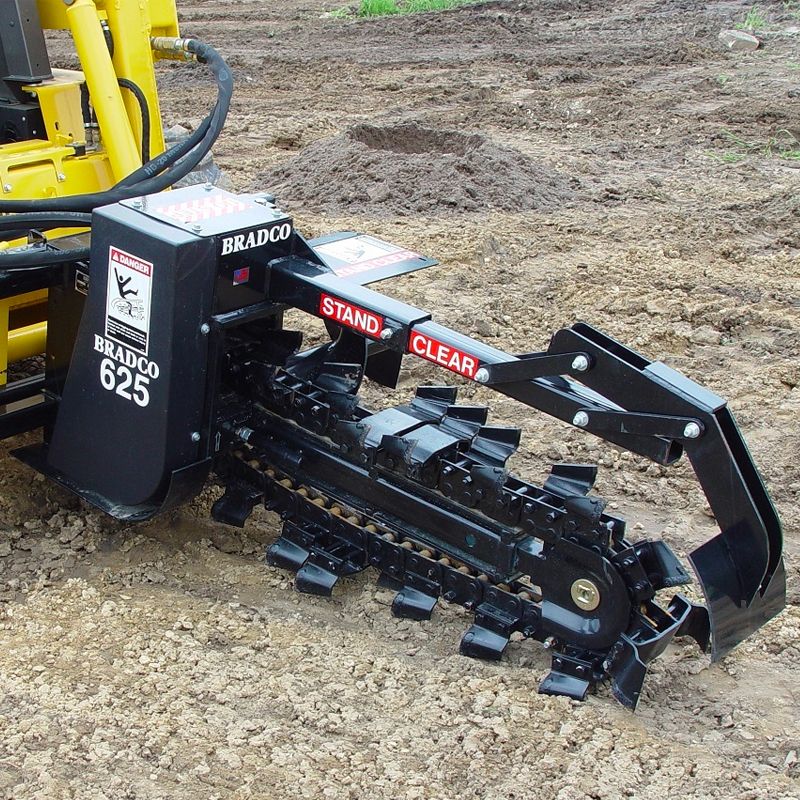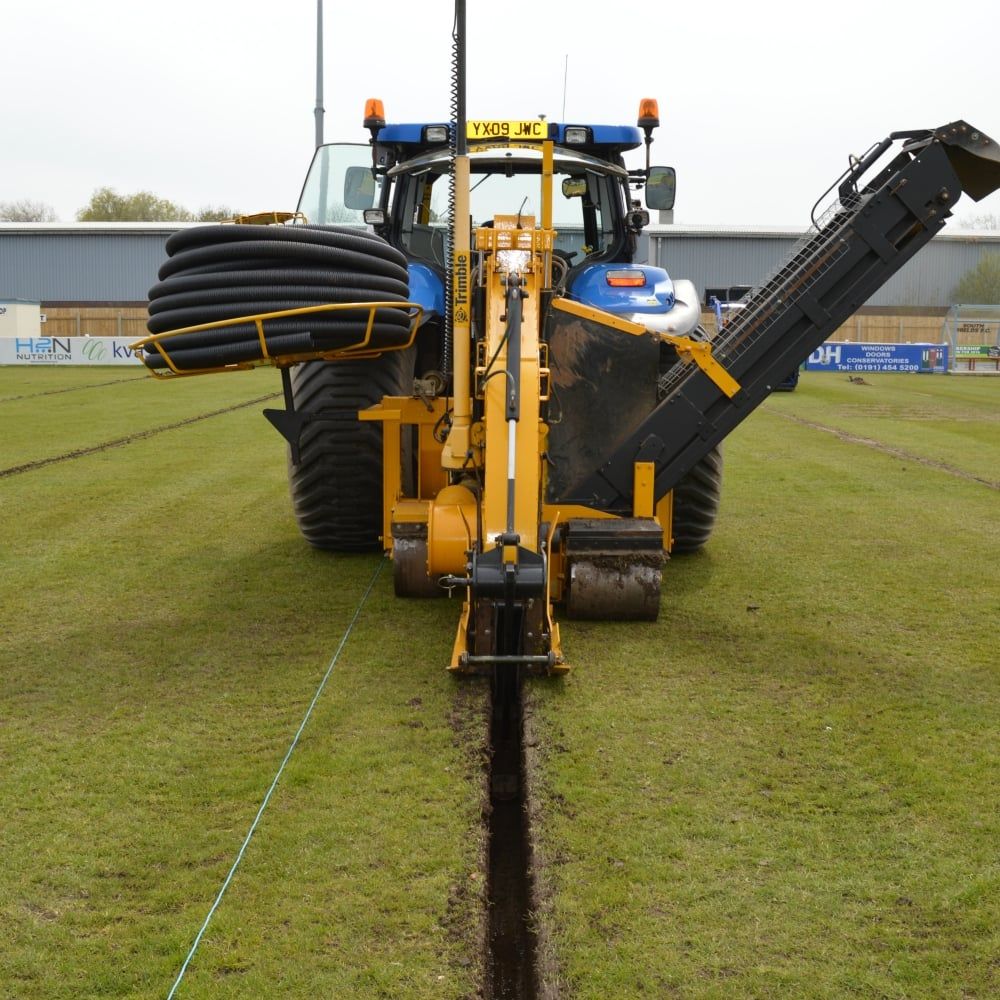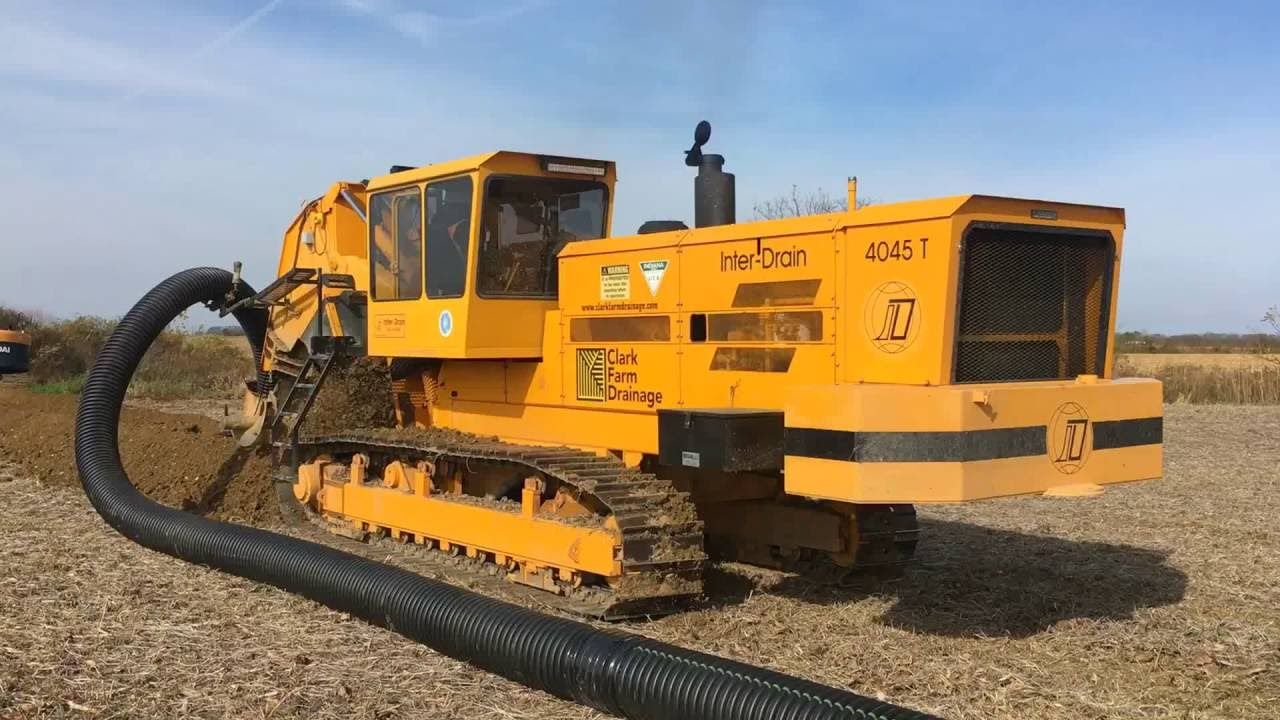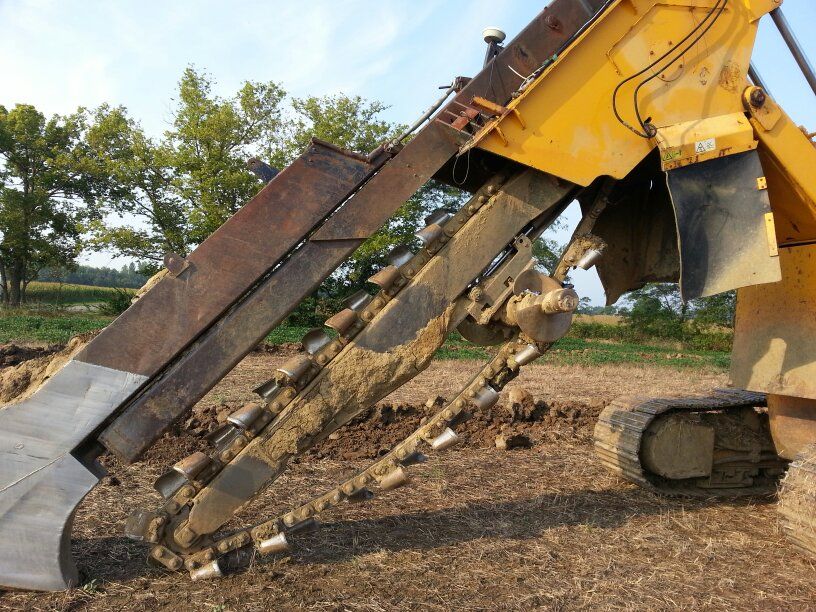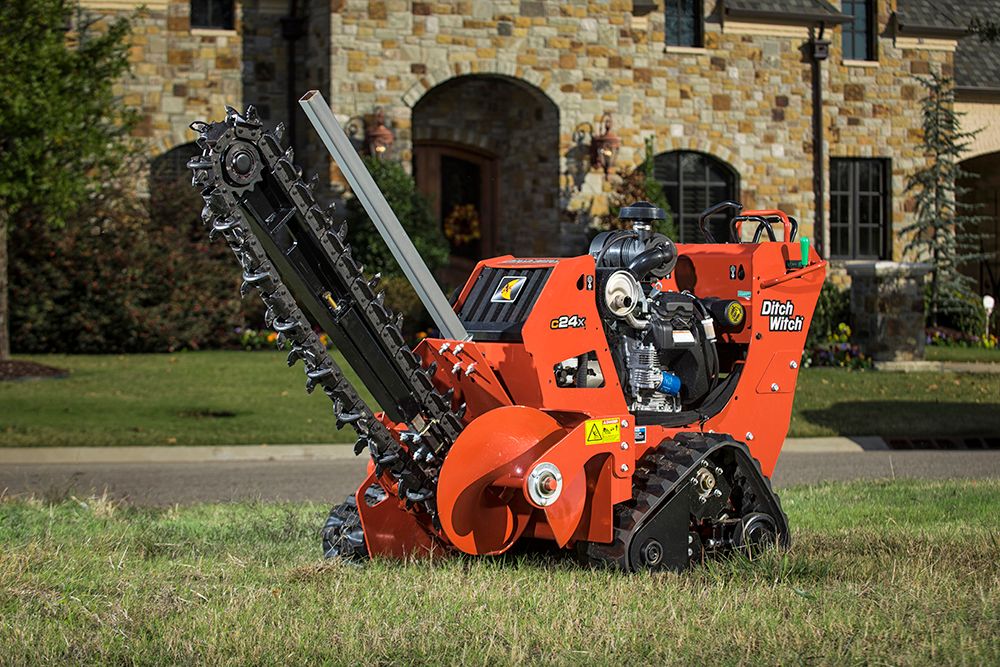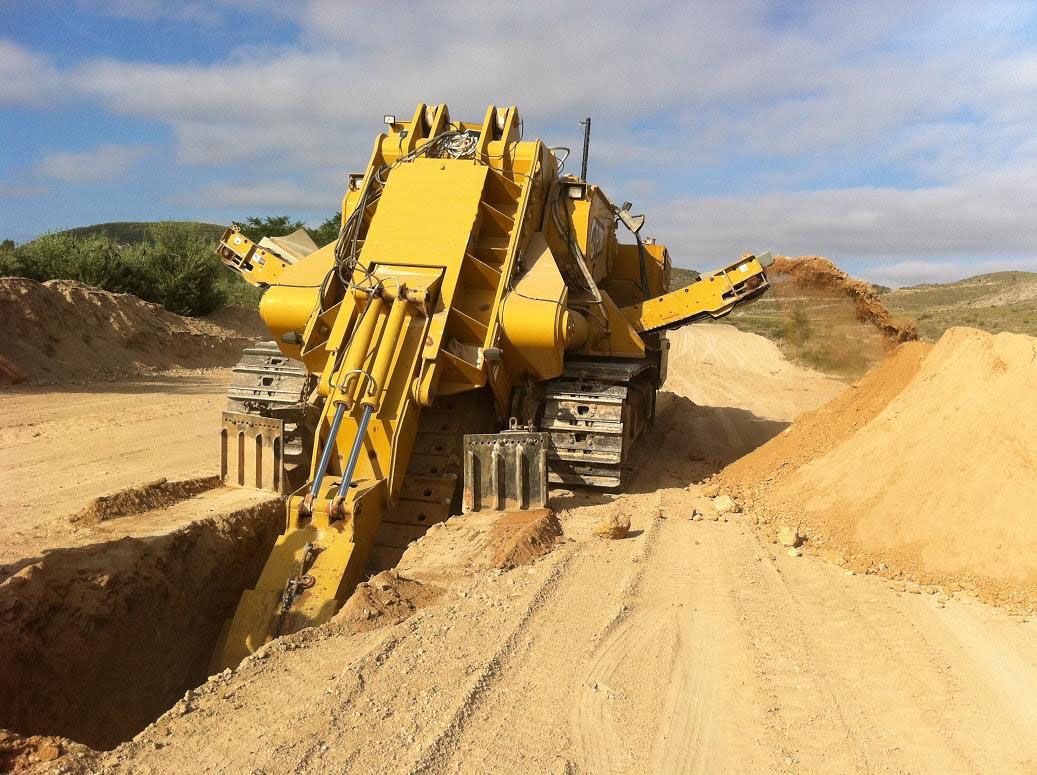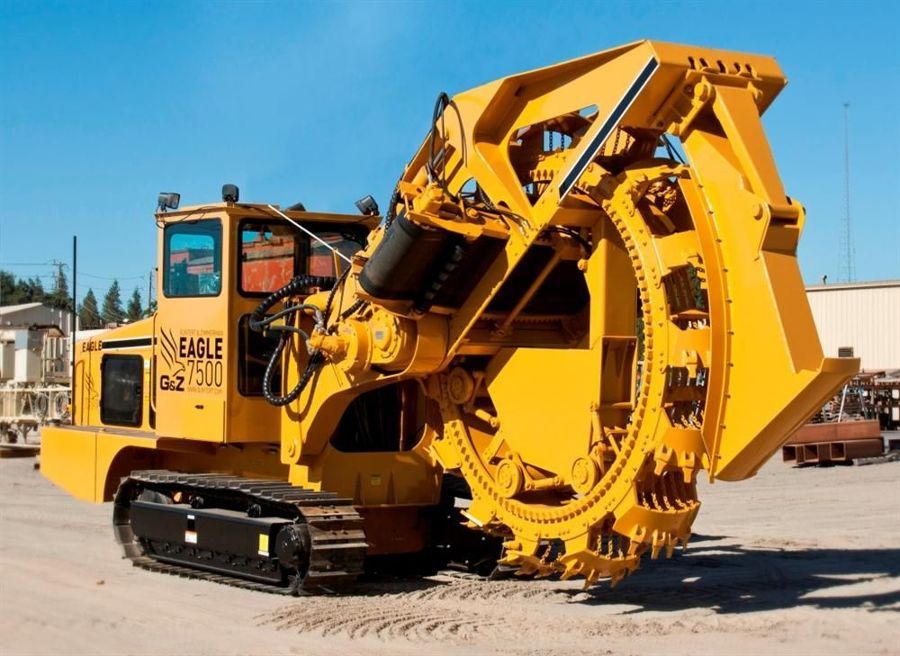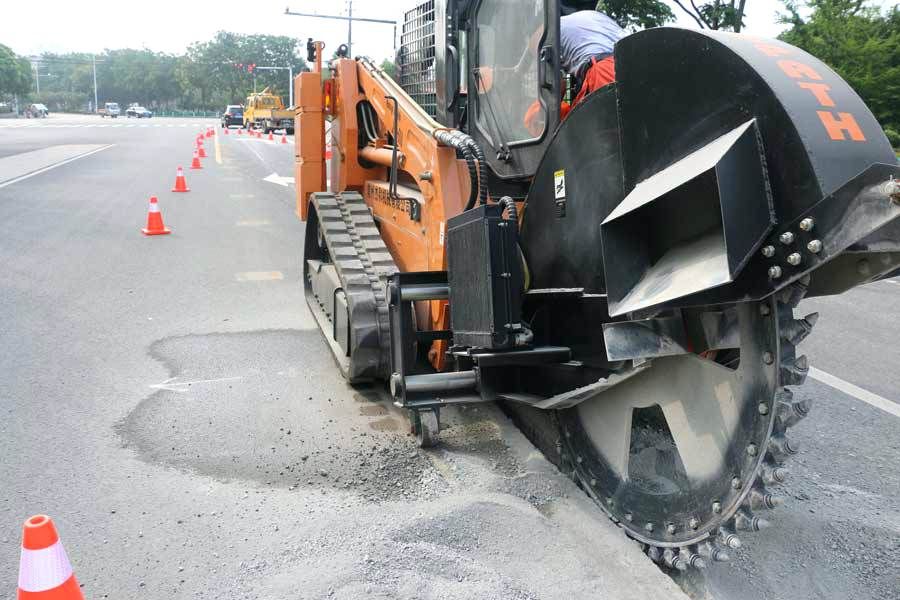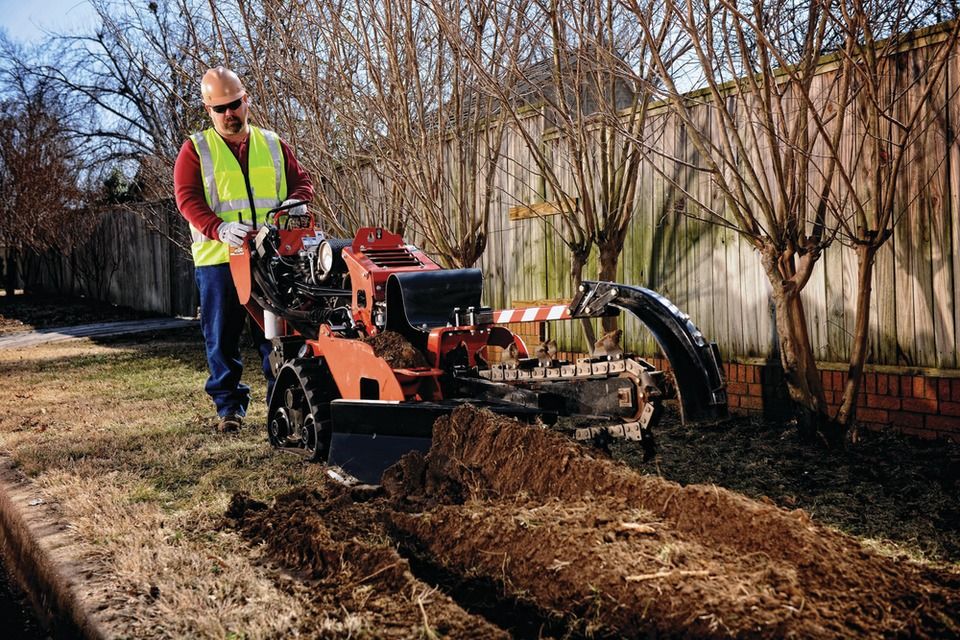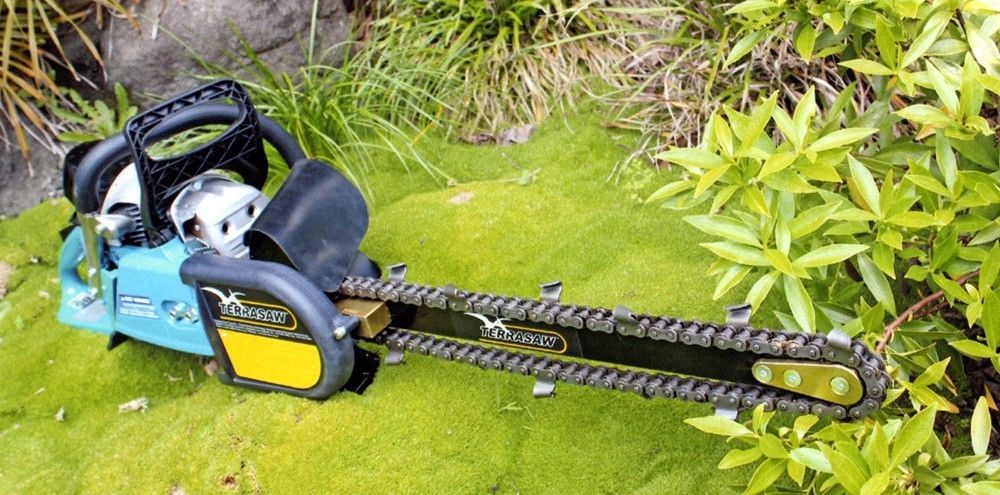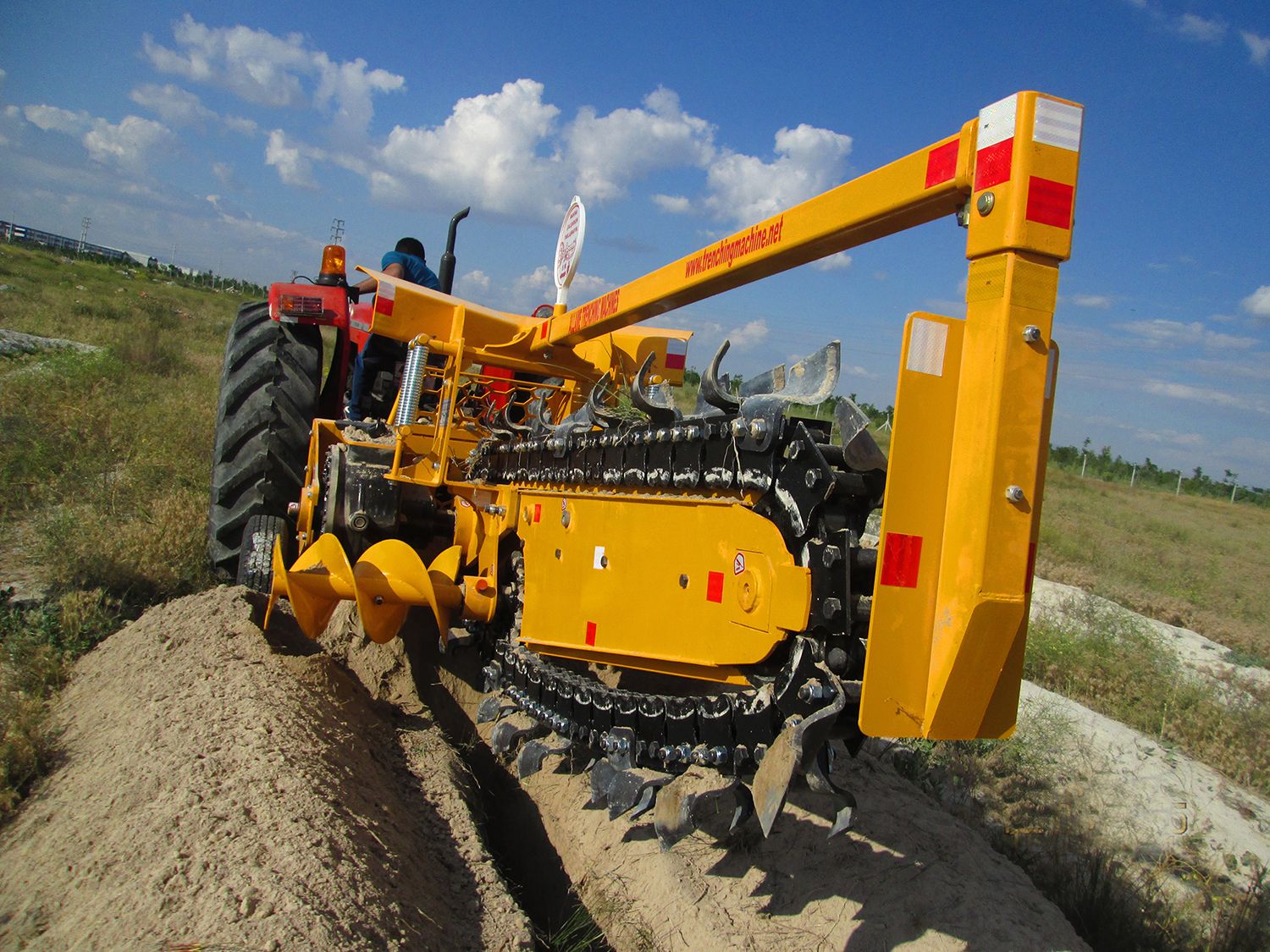As gearheads, our love of all that is mechanical doesn’t stop at just cars or bikes. In all honesty, we marvel at all that is mechanical, and in truth, the bigger and more powerful it is, the better. And lucky for us, there are, in fact, many great and monstrous machines out there for us to study and ponder upon in our free time, or for our daily bread, as many of us make our wages studying these mammoth machines and vehicles that call so much of our attention.
And at the end of the day, what is more awe-inspiring than tons and tons of metalworking and digging for a purpose far beyond just taking us from point A to point B? Probably nothing. And just what exactly could we be talking about? If you said farm and construction equipment, you’d be right.
In this article, we’re going to take a look at one of the most powerful pieces of equipment used in the farming, construction, irrigation, and pipe-laying field: the chain trencher. Known as a chainsaw on wheels, these vehicles are incredibly powerful and can give even the most powerful of tanks a run for their money.
We’ve dug up (no, not by using a chain trencher) many cool and awesome facts about these titans of the field and will share them with you all, dear readers, so climb aboard and get ready for some fierce and precise digging action.
25 COMPLEX MACHINES
These machines are definitely complex pieces of work. The intricacies involved in their fabrication, as well as in their use, is quite detailed and we will definitely try to inform you as best we can in this article. By the end, we promise you should be a tad savvier as to how these things are built and operate. Of course, you won't have a doctorate, nor a permit to operate one yourself, but you will have a basic knowledge and know quite a bit more about these mammoth machines than you once did, and for that, we say: you're welcome, dear reader. But beyond these intricacies is the incredible work these machines are capable of doing.
24 PRIMARY USAGE: TO DIG TRENCHES
It seems like such a broad statement and, really, it is, as there are other uses for this machine—in all its shapes and sizes—that we'll get to soon enough, but its main task is to dig trenches in soil, or any other terrain, even sand, among others, for the purpose of the installation of cable, pipes, electrical wires, or even drainage systems. This work is tantamount for farms, the construction field, and yes, even irrigation. The trenches they dig can be rather thin or even spacious, as the photos we've found, no doubt, show. But their inclusion in the farming or construction process saves lots of dough in the end and that's definitely a positive thing.
23 THE MECHANICAL COMPLEXITIES ONLY GO ON FROM THERE
As we said, the use of these trenches can often be for pipes and tubing for a plethora of reasons, and some of these chain trenchers actually have a built-in spool or coil of the pipes or tubes they'll be needing to install in the trench, and as they cut, the coil winds accordingly, directly placing the tube where it needs to be right after the trench is made. Now, talk about genius engineering! Try to imagine, back in the day, farmers and construction workers having to split up that work in many stages. Now, because of this added technology, the work can be done that much faster.
22 WHAT IS IT ABOUT A GIANT MACHINE?
When we're kids and we first fall in love with all that is mechanical, something comes over us and for the rest of our lives, we are left to marvel at what was once but a wonderment. As we grew, we learned to appreciate what we saw and learned about a new vehicle every chance we got. But that first time, it's something rather special and most of us will never forget it. For me, the first machine I saw that absolutely blew me away wasn't a car or truck, but a tractor. It belonged to a friend of my grandfather's, and he was using it to haul wood from a patch of forest to my grandfather's front lawn. I was but six years old, and I can still remember marveling at the giant wheels it rolled on and the power it exuded.
21 MILITARY USES
And believe it or not, these big boys are also used by the military, as trenches are often used in warfare, as the ground is the best place to be when in battle, as we've seen in many Hollywood films. They dig the holes large enough for soldiers to be able to fit inside for long stretches of time. In fact, it's one of the first things done when setting up a base of command and definitely comes in handy should the base come under attack at any time while it's in use. Within these trenches, the military will often dig other holes and branching trenches where supplies and food can be stored. In fact, the complexities of these trenches can be quite detailed, as well.
20 THE MECHANICS
How does the chain work? That's the question most commonly asked, as the marvel is definitely something to wonder about, especially when it's in use. A digging chain is revolved around a metal frame. It's as simple as that. It's mechanically powered and the chain-cutting action can cut through surfaces that bucket-style trenchers just can't get through. Essentially, these bad boys get the job done, the all-too-difficult jobs. The chain is known, in this case, as the digging chain. The metal frame it revolves around is also known as the boom. The angle at which the boom is positioned is what controls the depth of the trench.
19 ESSENTIALLY, A GIANT CHAINSAW
Pretty much, it works like a giant version of your run-of-the-mill chainsaw, only on a much larger scale. Its power is amped up that much more, and depending on the size of the chain, it can dig and dig and still come back for more. That's the thing that most don't realize about this farming and construction equipment, it's built to last and it won't let you down, or rarely will, hopefully. The work it (and they) can accomplish is extensive and can shave hours off of a worker's day. And hey, again, that's very much like a chainsaw can save a lumberjack's day and have him done in no time.
18 DIFFERENT MODEL DESIGNS
There are, in fact, many different shapes and sizes to these huge pieces of machinery and we'll get to the sizes in a bit. But the various designs may vary according to desired purposes. In some of these photos, if you look closely, you'll definitely see the differences, although, at times, these differences can be rather minute. But these differences are, indeed, critical and can make the difference in uses rather obvious. Sometimes, a chain trencher can have a different angle, and needs a different angle, to get certain jobs done, as we see in this shot, as the arm is, indeed, quite long and its reach is, no doubt, longer than others we've seen thus far, or will see moving ahead.
17 A PLETHORA OF COMPANIES
Like in any other field, there are definitely many companies fabricating trenchers like the ones we see here. The competition is, indeed, fierce, because everyone and their cousin claims to have the best trencher in the business, and like in any other field, the choices aren't all that easy to make, because they are all pretty decent, but as with anything else, the consumer needs to beware, because these vehicles, or rather machines, sure aren't cheap, and we'll get into price ranges in just a little bit. And be wary for that, too, as these puppies sure aren't the cheapest piece of equipment you're likely to purchase.
16 PRICE RANGES
Prices for the hand-guided trenchers vary quite considerably, and really, they're on both sides of the spectrum. For example, the prices can actually range from as low as 500 dollars to 15 000 dollars, depending on quality and make, of course, the best and most expensive seeming to be from Taian Hysoon Machinery, but again, that's depending, of course. As for the massive trenchers, like the ones featured in this article, well, they can go for $40,000, used. Brand new, we're looking at over $100,000, again depending on makes, models, and the reputation of the companies who've done the manufacturing.
15 PRICES CHARGED FOR TRENCH WORK
And, of course, amidst all this technical talk about the mechanics involved with these beasts and the wonders that they are, we're sure that there are many wondering just how much is to be made as an operator of these machines. Well, as it turns out, this line of work can, indeed, be quite lucrative, at the end of the day. It's actually priced by the foot, if you can believe that, and can be up to a dollar a foot. Now depending on the size of the job, that can work out to quite a pretty penny. There are also companies that set a price for the day, for example, $125 for the day at a rental-like fee, then add on a fee per foot like a dollar per foot, in addition. Like we said, lucrative work, indeed.
14 TELECOMMUNICATIONS
Especially since the advent of fiber-optic technology in the field of telecommunications over the last decade or so, trenchers have been used to dig the trenches used to connect the world to the fiber-optic systems that run underground. The underground channels of this technology now look more like our horizons used to look, with crisscrossing telephone wires where birds could sit and squirrels could run and chase each other for the last acorn. Of course, these telephone wires are still up and running and probably will be until the technology is obsolete.
13 A BUILT-IN CONVEYOR BELT
Of course, there are probably many of you out there wondering what happens to all the refuse that is taken out of the earth while the trencher is busy making its narrow hole along the ground. And interestingly enough, a lot of these chain trenchers have a built-in conveyor belt that runs along the side of the chain that collects all the dirt or excavated material as it cuts through, collecting it and disposing it to the side as it digs the trench. Many teams operate with other vehicles following and collecting the refuse, for future in-fill use or to be discarded appropriately.
12 MANY DIFFERENT SIZES
As can be seen, these trenchers can come in a variety of sizes, and depending on the desired trench, the right size needs to be chosen for the job. However, there are companies or farmers that can't always afford the biggest trencher, so a smaller one will have to suffice. And there are, in fact, many smaller models out there of many different configurations. Although if a certain company or again, farmer, is stuck with a smaller one, then they will be forced to dig the trench with what they've got and that can get tedious, especially with certain models, especially the push models like the one pictured here.
11 JUST A ROBOT IN DISGUISE
There are those who can't help but look at these mammoth machines and see nothing more than a transformer, a robot in a good disguise. Why do we feel that our vehicles or machines can think for themselves, or better yet, have feelings? Because as children, we were taught that everything "feels" and that everything should have a thought pattern, so why not these huge machines we marvel at? This is why we kick our cars when they won't start and immediately feel bad. This is why we give our vehicles names. And this is where a concept like The Transformers surely comes from. A nice thought, if your car could talk back to you and transform into something that could protect you, isn't it? I'd rather take a huge trencher than a car, though, especially if it is a transformer!
10 WHEEL TRENCHERS
There are, of course, many other types of trenchers that do a good deal of the same work, although all the types do have their very own special functions that only they can accomplish. A wheel trencher really is described by its name. Overall, it is cheaper to maintain and repair and is rather effective for quickly accomplishing tasks, especially those requiring rather thinner trenches, as opposed to the chain trencher in question. They are, indeed, very sturdy, but are just a variation of the same machine, really, with the minor differences we mentioned. Essentially, take your pick, but these are better for harder surfaces, so keep that in mind.
9 MICRO TRENCHER
Now, if you've ever passed a construction site in the city where city workers were working on a street, then you've definitely come across one of these bad boys. It's used primarily to cut through cement and asphalt, as can be seen in this image. Again, it's a wheel trencher format, so it's proof that what we said about wheel trenchers being perfect for firmer surfaces is, in fact, true. Notice that these work in tandem with water, preventing friction as they cut through hard surfaces like asphalt and even, in some cases, metal or steel. Now that's a sight to see. Just remember to wear your safety goggles on that excursion.
8 PORTABLE TRENCHER
And this one here is probably most common for middle-class farm and construction workers. It's perfectly good and gets the job done, although it is a tad slower in execution but still very precise, nonetheless. You would definitely find this variety at your local farm—the smaller farms, primarily, of course—and they are perfect for trenching long but small canals where lettuce and corn could be planted. And if used on a small construction site, the trenches could serve to lay the necessary cables or other fare.
7 TERRA-SAW
And if you can't afford any of the aforementioned trenchers on this list, there's always the Terrasaw that you can see in this image. It's definitely your cheapest choice and your simplest model. Although, we would like to remind you that this version here requires the most amount of manual labor, so don't plan on digging trenches that are miles long with this bad boy. It resembles a regular chainsaw, but please be advised that it is not a regular chainsaw. So please, do not attempt to dig a trench in the dirt with your regular chainsaw, as this could lead to terrible results.
6 TRACTOR-MOUNTED TRENCHER
And of course, this is the variety we've seen most in this article. We've just added it to this article to clarify and keep you in the know, as we promised you, about all chain trenchers and saws, and just in case the term popped up and you thought back to this article and said to yourself, "Hey, they didn't mention anything about tractors!" But these are pretty much your run-of-the-mill huge chain trenchers, as they really wouldn't move if it weren't for the powerful tractor leading the way and dragging the boom behind them.

